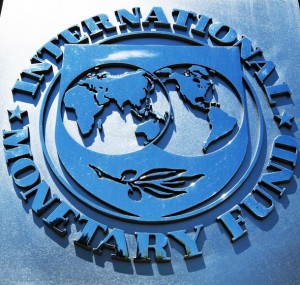
The International Monetary Fund has always shown some crypto-curiosity. In a recent document, the IMF commented on the use cases and utility of stablecoins, or assets with a pegged value.
IMF Bigs Up Stablecoins
In a recent IMF staff paper, part of the Fintech Notes series, the organization outlines the promises and risks of those assets, as a new arrival on the fintech scene. The IMF immediately points out the advantages of stablecoins, creating the potential for fast and accessible global payments.
Stablecoins are various types of tokenized currencies, most often the US dollar. But there are various ways this peg is achieved. One way is to simply store dollars in a bank, making the stablecoin redeemable. The riskier type is an algorithmic stablecoin, with its value derived from other crypto coins.
Pegged Coins Bring Personal Finance and Macro Risks
The IMF sees risks in the stablecoin markets, especially for smaller economies. If a local currency is shunned in favor of a global stablecoin, whether Libra or another asset, this could lead to unwanted dollarization of the economy and a loss of national currency sovereignty.
Right now, there is competition among some stablecoins. But the IMF predicts that in the future, a single network could monopolize the market. Such a network could displace banks and ruin other payment networks. Within the crypto space, a monopoly has already happened in a way, as Tether (USDT) covers more than 97% of all stablecoin deals.
Banks will also have to compete with the stablecoins, while providing services for some of the projects. The other threat is that various types of stablecoin networks could hide terrorism financing and illicit activities. Despite the fact that a blockchain record can be transparent and accessible internationally, regulators may still have a hard time tracking that information.
Currently, some stablecoins are issued only after the buyer goes through a KYC process. But even that process can be subject to fraud or identity theft. Stablecoin projects also don’t provide the same recourse in case of loss or fraud, and the IMF envisions firms will need to comply with capital and liquidity requirements, much like banks.
Central banks have explored various types of pegged digital coins for a while. People’s Bank of China has stated it may issue a digital yuan. India has also mentioned the potential of a digital rupee, though not announcing a date. The IMF has been skeptical of alternative national currencies. The Fund issued a special warning to the Marshall Islands regarding its intention to distribute a national crypto asset, the Sovereign (SOV).
What do you think about stablecoins? Share your thoughts in the comments section below!
Images via Shutterstock
The post IMF Educates on Stablecoins, Is Government Adoption Possible? appeared first on Bitcoinist.com.

Bitcoinist.com is author of this content, TheBitcoinNews.com is is not responsible for the content of external sites.
Our Social Networks: Facebook Instagram Pinterest Reddit Telegram Twitter Youtube











